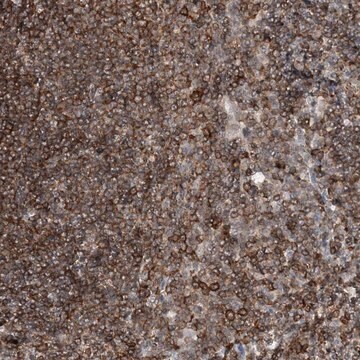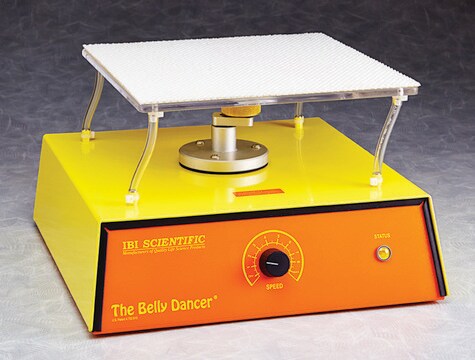MABE1112
Anti-PRMT9 Antibody, clone 128-29-1
clone 128-29-1, from mouse
Sinónimos:
Putative protein arginine N-methyltransferase 9, Putative protein arginine N-methyltransferase 10
About This Item
Productos recomendados
biological source
mouse
Quality Level
antibody form
purified immunoglobulin
antibody product type
primary antibodies
clone
128-29-1, monoclonal
species reactivity
human
should not react with
mouse
technique(s)
immunocytochemistry: suitable
immunohistochemistry: suitable
immunoprecipitation (IP): suitable
western blot: suitable
isotype
IgG1κ
NCBI accession no.
UniProt accession no.
target post-translational modification
unmodified
Gene Information
human ... PRMT9(90826)
General description
Specificity
Immunogen
Application
Epigenetics & Nuclear Function
General Post-translation Modification
Immunohistochemistry Analysis: A 1:50 dilution from a representative lot detected PRMT9 in human kidney, testis, and cerebellum tissue sections.
Immunocytochemistry Analysis: A representative lot detected a predominant cyotoplasmic PRMT9 localization by fluorescent immunocytochemistry staining of 4% paraformaldehyde-fixed HeLa cells (Yang, Y., et al. (2015). Nat. Commun. 6:6428).
Immunoprecipitation Analysis: A representative lot immunoprecipitated PRMT9 from HeLa cell lysates (Yang, Y., et al. (2015). Nat. Commun. 6:6428).
Western Blotting Analysis: A representative lot detected GST fusion protein containing human PRMT9 a.a. 401-550 recombinant fragment, but not PRMT9 a.a. 1-199, 200-400, or 551-895 GST fusion (Yang, Y., et al. (2015). Nat. Commun. 6:6428).
Western Blotting Analysis: A representative lot detected human, but not mouse, PRMT9 using lysates from various human and mouse cell lines (Yang, Y., et al. (2015). Nat. Commun. 6:6428).
Quality
Western Blotting Analysis: 2.0 µg/mL of this antibody detected PRMT9 in 20 µg of A431 cell lysate.
Target description
Physical form
Storage and Stability
Other Notes
Disclaimer
¿No encuentra el producto adecuado?
Pruebe nuestro Herramienta de selección de productos.
Storage Class
12 - Non Combustible Liquids
wgk_germany
WGK 1
flash_point_f
Not applicable
flash_point_c
Not applicable
Certificados de análisis (COA)
Busque Certificados de análisis (COA) introduciendo el número de lote del producto. Los números de lote se encuentran en la etiqueta del producto después de las palabras «Lot» o «Batch»
¿Ya tiene este producto?
Encuentre la documentación para los productos que ha comprado recientemente en la Biblioteca de documentos.
Nuestro equipo de científicos tiene experiencia en todas las áreas de investigación: Ciencias de la vida, Ciencia de los materiales, Síntesis química, Cromatografía, Analítica y muchas otras.
Póngase en contacto con el Servicio técnico







